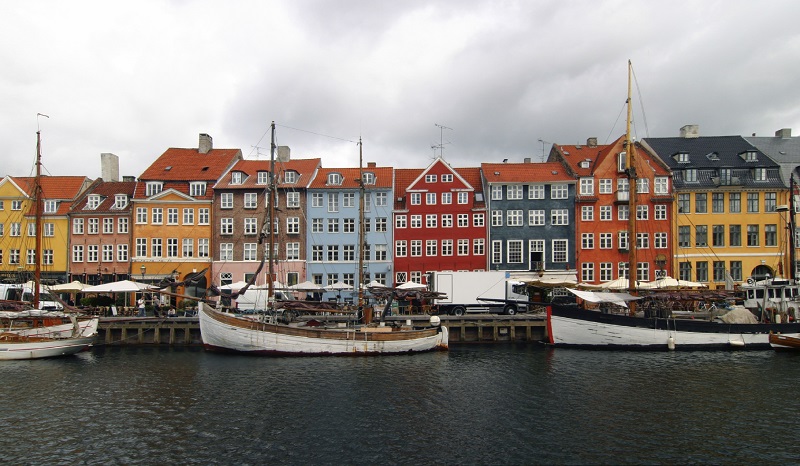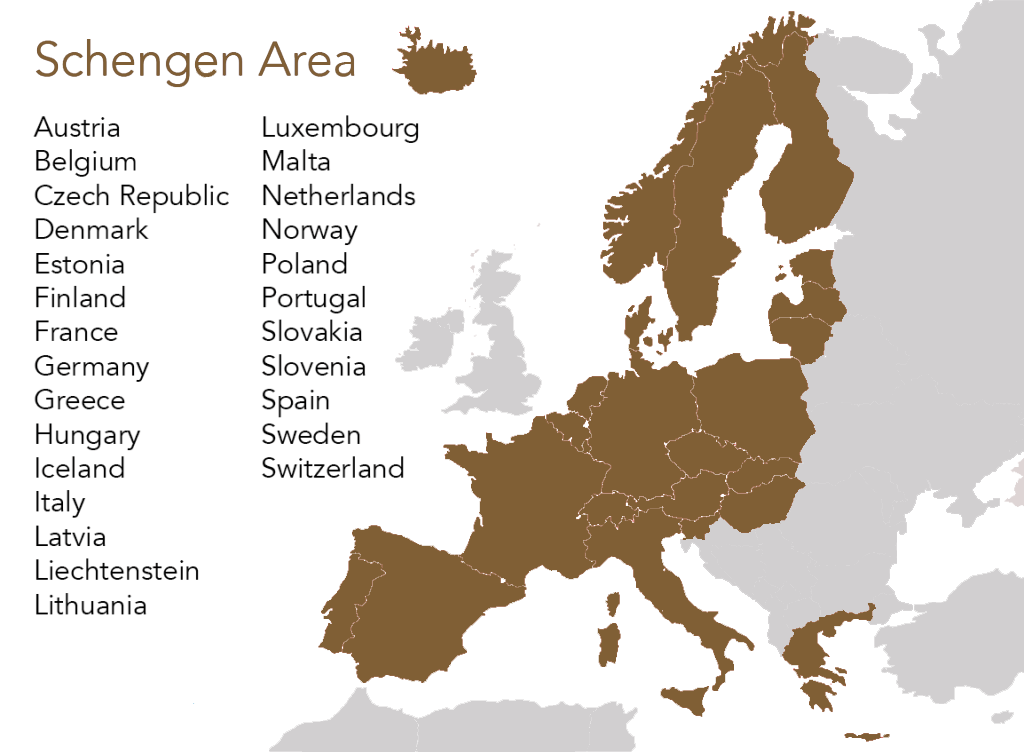What is the Schengen Area and Why Should I Care as a Traveler?
Many first time travelers to the European Union (EU) have never heard of the Schengen Area (also known as the Schengen Zone), but it’s crucial for all Americans traveling to Europe to understand how the Schengen Area affects American tourist visas.
The Schengen Area is an agreement among 26 EU countries to have open and free borders. This means that, since the agreement was made, you no longer have to go through border control when traveling from one Schengen country to another. That is, if you travel by car from Italy to Denmark passing through Italy, Austria, Germany, and Denmark there won’t be a single border checkpoint along the way.

Signed on June 14, 1985, the Schengen Agreement is a treaty that abolished national borders to participating countries. Now, the “Schengen Area” is the world’s largest visa-free zone. Europe’s most important borderless area, including 22 European Union member countries and four non-EU countries. All the member countries act as a single jurisdiction for visas globally.
The European Union started with only six countries. Treaties after treaties, the EU has now 27 member countries:
| Austria | Denmark | Hungary | Malta | Slovenia |
| Belgium | Estonia | Ireland | Netherlands | Spain |
| Bulgaria | Finland | Italy | Poland | Sweden |
| Croatia | France | Latvia | Portugal | |
| Republic of Cyprus | Germany | Lithuania | Romania | |
| Czech Republic | Greece | Luxembourg | Slovakia |

The Difference Between the European Union and the Schengen Area
While both the EU and the Schengen agreement are between EU countries; there are several differences between the two unions:
| The European Union | The Schengen Zone |
| The European Union is an economic and political union of several European countries. | The Schengen Area is a travel zone of several European countries where citizens can travel freely without a passport or a visa. |
| Established in 1993. | Established in 1985. |
| Its mission is to provide an internal market of goods, services, and capital. | Its mission is to promote freedom of travel between its citizens and provide a common visa scheme for foreign visitors. |
| It has 27 European member states. | It has 29 European member states. |
| Each member state follows a set of rules and regulations, and every citizen in the EU has the right to vote in the EU parliament. | Each member state follows the same visa policy, but each country can choose which visa applications to reject or approve. |
Like the Schengen Area, the EU hosts free trade across borders to enhance the member states’ global economic growth and monetary union. All member countries have the same currency: Euro (€). When part of the Schengen Area, you can also travel freely to Iceland, Liechtenstein, Norway and Switzerland, which are not part of the EU.
Therefore, the Schengen Area is primarily comprised of 26 European states that have come together to abolish passport and border controls. Visitors to the EU effectively mean that the Schengen Area acts as a single country. Once you enter one Schengen country, you have entered them all.
Schengen Countries VS EU Countries
Not all EU countries belong to the Schengen agreement and vice-versa, as listed below:
| Country | European Union | Schengen Area |
| Austria | Yes | Yes |
| Belgium | Yes | Yes |
| Czechia | Yes | Yes |
| Denmark | Yes | Yes |
| Estonia | Yes | Yes |
| Finland | Yes | Yes |
| France | Yes | Yes |
| Germany | Yes | Yes |
| Greece | Yes | Yes |
| Hungary | Yes | Yes |
| Iceland | No | Yes |
| Italy | Yes | Yes |
| Latvia | Yes | Yes |
| Lithuania | Yes | Yes |
| Luxembourg | Yes | Yes |
| Malta | Yes | Yes |
| Netherlands | Yes | Yes |
| Norway | No | Yes |
| Poland | Yes | Yes |
| Portugal | Yes | Yes |
| Slovakia | Yes | Yes |
| Slovenia | Yes | Yes |
| Spain | Yes | Yes |
| Sweden | Yes | Yes |
| Switzerland | No | Yes |
| Liechtenstein | No | Yes |
| Bulgaria | Yes | Yes |
| Croatia | Yes | Yes |
| Cyprus | Yes | No |
| Ireland | Yes | No |
| Romania | Yes | Yes |
Why Are Some Countries in the EU but Not in the Schengen Area?
Some EU countries are not in the Schengen Area because they did not fulfill the necessary criteria to join the zone. Cyprus, which joined the EU in 2004, has to resolve the Cyprus dispute before it can enter the borderless territory of Schengen.
As of March 31, 2024, Bulgaria and Romania have now joined the Schengen area.
On the other hand, The Republic of Ireland is the only EU member that refused to sign the Schengen Agreement, prior to the 2004 enlargement. Ireland and the UK have formed a Common Travel Area with passport-free travel for their citizens and the three British Crown Dependencies of Jersey, Guernsey and the Isle of Man, that are outside the European Union. When the initial European Union began to take form (the European Economic Community), not all member states agreed to abolish their borders, so the Schengen agreement was signed separately.
The UK had refused to sign the agreement because it is easier for an island nation to maintain borders, while Ireland assessed that it was not in its interest to end the travel agreement with Britain and reestablish the border checks.
Today, even the countries that are not officially a part of the Schengen Area follow the guidelines for border control under other de-facto agreements.
Sources: https://visaguide.world/europe/eu-vs-schengen/
https://www.endevio.org/en/insights/what-is-the-schengen-area